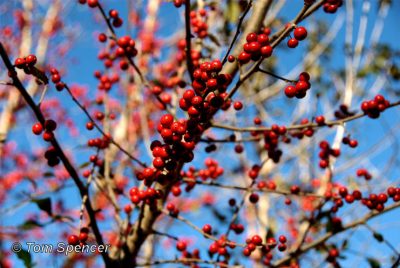Nature Watch Austin
air date: January 7, 2012
What birds are headed our way and how can we welcome them? Nature Watch Austin co-authors Lynne and Jim Weber identify winter migrants and native owls. In their garden, meet their favorite evergreen ferns. On tour, visit Georgean and Paul’s wildlife sanctuary on the Balcones Canyonland. Daphne’s pick of the week is winter wildlife favorite: possumhaw holly. Question of the Week explains why a Round Rock teacher’s tomato sprouted from the inside and how the students got a new plant! Steve Kainer from Hill Country Water Gardens & Nursery demonstrates how to make a disappearing fountain to refresh wildlife all year long.

 Jim Weber
Jim Weber Lynne Weber
Lynne Weber Daphne Richards
Daphne Richards
 Steve Kainer
Steve Kainer